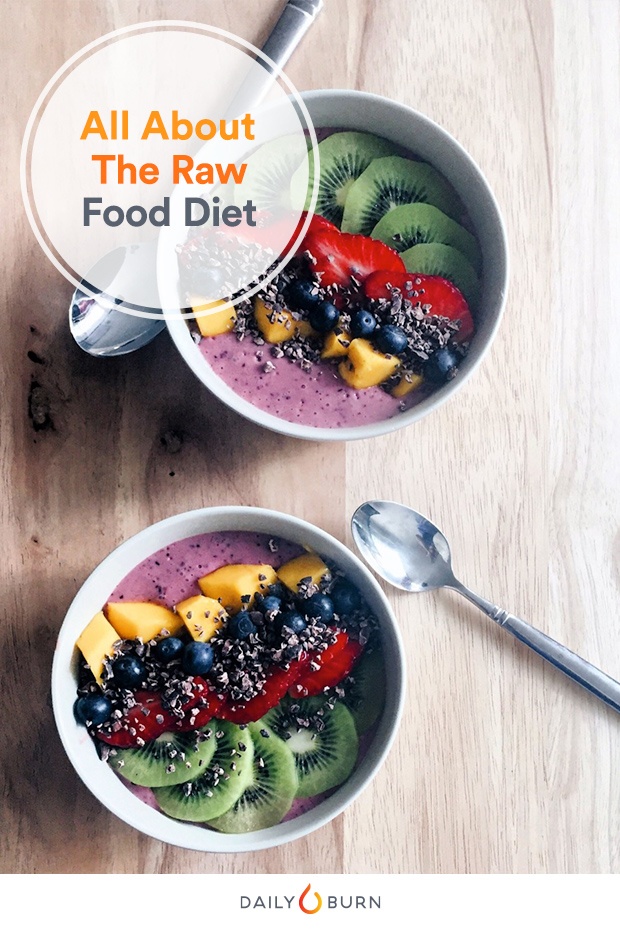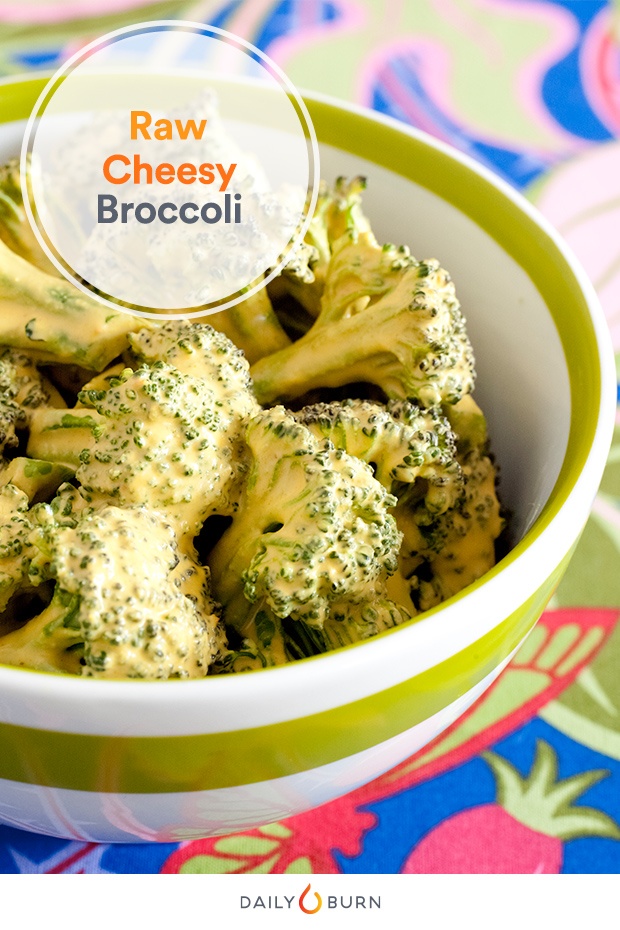
Photo: Twenty20
When the fit and famous praise the raw food diet, we pay extra attention. Celebs like Uma Thurman and Demi Moore claim that the no-cook eating plan has helped them stay in shape, protects animals and reduces their carbon footprint. But if that means we have to quit warm bowls of zoodles and roasted sweet potato fries, why’s everyone going gaga over going raw? We spoke with Matt Amsden, author of RAWvolution: Gourmet Living Cuisine and chef and founder of Rawvolution, a raw food delivery service, to guide us through the ins and outs of the raw food diet.
RELATED: The Pros and Cons of 6 Popular Weight Loss Diets
What Is the Raw Food Diet?
The raw food diet is pretty much exactly what it sounds like: a diet comprised entirely of uncooked foods (“cooked” usually means heated to more than 115 degrees). Most raw foodies are also vegan, though some do eat uncooked and unpasteurized dairy, meat and eggs. Not surprisingly, the raw food diet tends to be especially high in fruits and vegetables, but it can also include grains and legumes prepared in a heat-free way.
Despite the more recent celeb hype, raw food actually goes back over a century. The diet was popular with a group called Naturemenschen — or Natural Men — in the late 1800s and early 1900s. “At the beginning it was a back-to-nature movement, and it involved a lot more than food,” says Amsden. In addition to eating raw, these early hippies wore long beards and hiked or rambled through the countryside.
RELATED: 3 Questions You Should Ask Yourself Before Going Vegan
The Raw Food Diet: Clean Eating on Overdrive
Today’s raw food proponents are less likely than their predecessors to eschew shoes along with their stove. But many embrace raw foodism primarily to lose weight. Eating raw is effective for weight loss, since fruits and vegetables have a low calorie count. They also have a more diverse array of vitamins and minerals compared to processed foods, meat and dairy.
According to Amsden and other raw food proponents, heat from cooking destroys many nutrients and the natural enzymes found in foods. There is some evidence that heat destroys vitamin C and some B vitamins; cooking foods in water can cause them to leach their nutrients into the water; and grilling or charring foods can also create cancer-causing compounds
But raw foodies also say that eating raw can help reverse disease, reduce fatigue and brain fogginess and improve your complexion, thanks to the wealth of radiance-boosting nutrients. In addition to weight loss, people have used the raw food diet as a way to detox from highly processed foods, sugar and meat or dairy. Amsden says, “When you’re eating pure, clean plant foods, they allow the body to naturally detoxify. The truth is the body is self-detoxifying and self-healing, so it’s really about getting out of the body’s way and allowing the body to heal.”
And because you’re eating so many feel-good foods, proponents say that going raw has positive effects on energy and well-being. While this all sounds great, there isn’t any scientific evidence to support raw foodies’ claims about enzymes or many of the other health effects of raw eating.
RELATED: How to Detox the Healthy Way: 16 Recipes You’ll Love
The Drawbacks of Going Raw
Some scientists say that the raw diet’s benefits are overblown, and there is, in fact, some danger to a raw vegan diet. For example, while cooking can be harmful to some nutrients, it can diversify your diet and make more nutrients accessible in certain foods. Raw foodism also significantly limits the foods you can eat, making it harder to meet your nutritional needs.
Amsden agrees that eating raw can be challenging and is certainly more work. “It’s such a departure from what the average person does. It’s a whole new way to shop, a whole new list of ingredients, a whole new vocabulary for preparation.” In addition to the steep learning curve associated with raw cooking, there is more actual work involved in the cooking.
“You’re having to do more in order to make [raw food] tasty and digestible,” he notes. In a way, you have to manually recreate some of the same processes cooking completes for you. Think: Experimenting with spices and herbs to capture specific flavor profiles you would get with cooked foods; using a dehydrator to “bake” your own breads, crackers and other snacks; and creating “cheese” sauces and nut-based milks with a food processor and cheese cloth.
RELATED: 7 Days of Clean Eating, Made Simple
That said, Amsden is quick to point out that eating raw isn’t an all or nothing proposition. “It’s something you can incorporate into your life and receive the benefits from. You don’t have to tear up one membership card and put a new one in your wallet.” Eating raw can be an excellent way to detox for a brief period (without living on an all-juice diet — hooray!). It can also help you incorporate more vegetables into your diet by eating raw one meal per day or one day per week.
Ready to Go Raw?
Try Amsden’s recipe for Raw Cheesy Broccoli here.

It’s beginner-friendly and an excellent way to dip a toe in the no-cook waters. Or, if you’re looking for a more comprehensive service, check out Rawvolution, which will be expanding to national distribution soon.







































